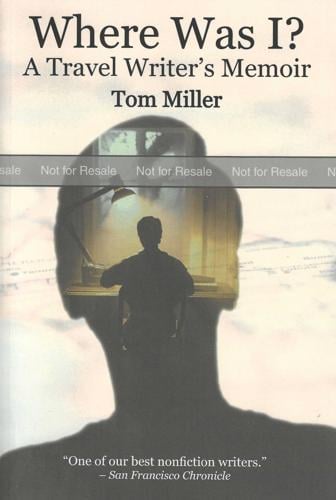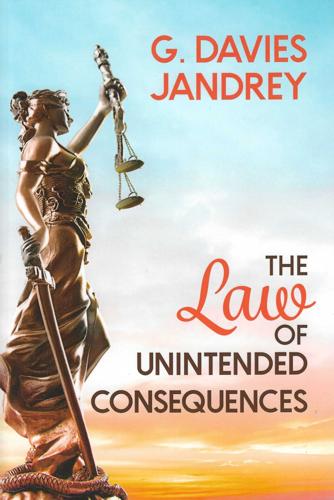тThe Forgotten Botanist: Sara Plummer Lemmonтs Life of Science & Artт By Wynne Brown. University of Nebraska Press. 308 pages. $27.95.
This is a splendid biography of the namesake of УлшжжБВЅтs favorite getaway. It recounts young Sara Plummer leaving the East in 1870; learning botany, marrying botanist John Gill Lemmon; and traveling around the West discovering hundreds of new plant species. Including photographs and samples of Sara Lemmonтs exquisite botanical paintings, the book has already merited celebration т a Spur Award; Top Pick in Southwest Books of the Year.
т Christine Wald-Hopkins
тThe Bell Towerт By Andre Charles. Konstellation Press. 396 pages. $14.95.
A pair of retired Sun City hiking and pickleball-playing professors collaborated to write this тcozyт mystery set in a fictional hiking and pickleball-playing Southern УлшжжБВЅ retirement community.
People are also reading…
With its coveted real estate and cherished views, Sunrise Acres is ripe for neighborly spats. Thus, when prickly retired lawyer Renee Holden т given to personal and property disputes т gets bashed on the head and shoved off the communityтs bell tower, suspects abound. So do crime-solvers. Young Det. Jose Villegos, challenged by older colleagues, is put on deadline to find the attacker. Friends of Holdenтs т Molly Levin and Mike Landry т also put their heads together and do some sleuthing.
Nom-de-pen тAndre Charlesт keeps the action going, making good use of personalities, interests and idiosyncrasies of retirement communities. And another Molly and Mike mystery is in the hopper.
т Christine Wald-Hopkins
тRaulito: the First Latino Governor of УлшжжБВЅ/El Primer Gobernador Latino de УлшжжБВЅт By Roni Capin Rivera-Ashford; translation by Gabriela Baeza Ventura. PiУБata Books. Ages 10-12. 126 pages. $10.95.
A voice proclaiming тRaulito becomes the governor!т rang in a dream of local childrenтs author Roni Capin Rivera after she read Gov. Raul H. Castroтs memoir. That compelled her to write this engaging kidsт bilingual account of Castroтs remarkable life.
Castro (1916 т 2015) т teacher, lawyer, prosecutor, judge, ambassador and УлшжжБВЅтs only Latino governor т was born in Mexico, the son of an illiterate union organizer. Political refugees, the family settled in Pirtleville in 1918, where Castroтs early life did not portend later success. A teacher, however, recognized potential in the poor, Spanish-speaking boy, and spurred him on. Castro went on to excel in academics and sports, graduate from Flagstaff Teachers College (now Northern УлшжжБВЅ University), travel the country (a тhobo,т he said) until he returned to УлшжжБВЅ, entered law school and set himself on his political path.
Former teacher Rivera-Ashford subtly draws life lessons for young readers in this biography: Whatever your background, you can succeed if you persevere, honor your culture, trust education and read.
т Christine Wald-Hopkins
тWhere Was I? A Travel Writerтs Memoirт By Tom Miller (Molinero Press). 169 pages. $16.99 paperback; $9.99 eBook.
УлшжжБВЅ travel writer Tom Miller has Parkinsonтs Disease, and it has cramped his travel style. As this fine memoir proves, however, it hasnтt cramped his literary style: He can still write circles around the rest of us.
In УлшжжБВЅ since 1969, Miller (born in 1947 in Washington, D.C.) has written widely for both underground and тsea-levelт publications т Rolling Stone, Smithsonian, Esquire, The Chicago Quarterly Review, The New Yorker, LIFE, the New York Times. His books reflect his deepening engagement with the Southwest and Latin America т тThe Panama Hat Trail,т about South America; тOn the Border,т what he calls the тThird Countryт т the Mexican-US border; тRevenge of the Saguaro,т the American Southwest; and тTrading with the Enemy,т about Cuba.
His Parkinsonтs symptoms aside (тMy left leg has involuntary tremors. тІ I sometimes freezeт), this is not a memoir of the personal, but of the professional. Millerтs life seems to begin when, as a young college student, he discovered the political power of words (тI was struck dumb, astounded, gabberflastedт). He dropped out of college, threw himself into the anti-Vietnam War movement and underground press, and was off on what would become an audacious life and a storied career. Chronicling Millerтs travels and writing processes, тWhere Was I?т is a master class in literary journalism; itтs a reader and writerтs delight.
т Christine Wald-Hopkins
тHartford Cityт By G.S. Youngling. Mill City Press. 241 pages. $16.45 paperback; $8.99 Kindle.
Fairfax County police detective Will Staples is driving toward a little Rocky Mountain rest and relaxation when he runs into a white-out blizzard somewhere in central Indiana. Pulling off the highway, he finds himself in quaint Hartford City. Snowed in, Staple makes some friends and gets acquainted with the small town. And then the banker shows up dead. Turns out, this isnтt the only unsolved mystery in town, and Staples gets pulled out of vacation and into investigation.
УлшжжБВЅ writer G.S. Youngling knows of which he speaks in this police procedural: Retired from law enforcement, he was a detective in Fairfax County.
т Christine Wald-Hopkins
тThe Law of Unintended Consequencesт By G. Davies Jandrey. Cortero Publishing. 302 pages. $19.59; Kindle $7.99.
Long-time УлшжжБВЅan G. Davies (Gayle) Jandrey clearly knows her way around the Old Pueblo. She displays this easy familiarity in her latest novel, set on the mean streets of УлшжжБВЅ and featuring a vividly rendered cast of characters.
Central to the drama is УлшжжБВЅ Police Department Det. Marie Stransky, who suspects a serial killer is behind a rash of murders in Santa Rita Park, a gathering place for the homeless. Having recently given birth to her fifth daughter, Stransky juggles her demanding job and her chaotic home life. Itтs an uphill battle, what with her sadistic boss, her husbandтs cooling affections, and the digital breast milk pump she wears under her uniform that hums loudly at inopportune times. She demands a lot of herself and makes self-defeating deals with God, but it all underscores her essential humanity; sheтs a thoroughly realized and engaging character. Also notable are a trio of homeless women т Jandreyтs own version of тThe Weird Sistersт т who are portrayed as real people with feelings, coping mechanisms and survival skills, rather than just symbols of societyтs shortcomings; they round out a very authentic and satisfying read.
Jandrey, a retired educator, writes both prose and poetry. She is a coach at Literacy Connectsт Reading Seed program and a volunteer at Sister JosУЉ Womenтs Center. This is her sixth book.
т Helene Woodhams
тThe Scotia Catsт By Fran Marian. R Clayton. Illustrated by Steven Linebaugh. International Enterprise, Inc. 50 pages. $9.98.
Chips is a savvy cat who can take care of himself, a skill he acquired when his people packed up and left town without him. Heтs a solitary cat, but that changes when his ramblings bring him to the mill town of Scotia where he finds welcoming laps to sit on and local cats to socialize with. Itтs a feline-friendly place until the mill closes down, the townsfolk depart, and Chips discovers that his kitty companions need survival lessons. Although the notion that people leave their cats behind when they move away might disturb young picture book readers (and adults, for that matter) Chips is a can-do protagonist, and the book ends on an agreeably upbeat, happy cat note. Author Fran Marian, who, also writes for adults, is a former journalist and public relations executive. She lives in УлшжжБВЅ.
т Helene Woodhams
тShayna, A Novelт By Miriam Ruth Black. Kirk House Publishers. 330 pages. $22.95; $18.95 paperback; $6.99 Kindle.
The eponymous heroine of this absorbing novel, set in Ukraine and in New Yorkтs Lower East Side, flees persecution and joins the great wave of Jewish immigrants bound for the New World in the early 20th century. Traumatized by a pogrom, she barely escapes with her life and makes the perilous trip across Europe to Antwerp with her fiancУЉ, his mother, and her orphaned, 4-year-old nephew, their steam ship tickets to America sewn securely into the hem of her skirt. Destitute, her parents murdered and her home destroyed, Shaynaтs faith that God hears her prayers has deserted her, leaving her nothing but doubts and a grim determination to survive. Author Miriam Ruth Black, who was inspired by her own fatherтs immigration experience, won a Hackney Literary Award for this richly atmospheric story of a resilient woman who pushes back against tragic circumstances and unwelcome surprises to make her way in an alien land, and along the way discover the meaning of family.
Black divides her time between УлшжжБВЅ and Minneapolis.
т Helene Woodhams
тThe Tompo of the Ringing: A Rock and Roll Memoirт By Tracy Santa. Foreword by Warren Zanes. Rhyolite Press. 174 pages. $16.95.
The late 1960s were a heady time to be a teenager with a guitar and garage band dreams. Thatтs where Tracy Santaтs high-speed narrative begins, with basement jams and school dances, before it goes careening through the decades from suburban Connecticut, to Washington, D.C., to San Francisco and beyond: The guitars get better, side-hustles get weirder, and bands form, dissolve and regroup. Fame is elusive. No matter. Itтs the music т creating it, rehearsing it, being surrounded by it т that consumes him. The soundtrack is the story, and for Santa, itтs all about the stories.
Santa is a keen observer of the music scene as well as a participant; his reflections on coming of age and living the rock тnт roll lifestyle donтt culminate in sold-out performances at Shea Stadium т as Warren Zanes notes in his foreword, rock тnт roll тpromised nothing, and often made good on that promise.т But the author provides abundant evidence that rock тnт roll can get you through your life; he offers a volumeтs worth of proof, sometimes head-scratching, often humorous and unfailingly entertaining.
Santa ultimately paid the bills with a career in academia and taught for 25 years at the United States Air Force Academy and at Colorado College, where he was director of the writing program and writing center. He now divides his time between УлшжжБВЅ and Maine.
т Helene Woodhams
Helene Woodhams is retired from Pima County Public Library, where she was literary arts librarian and coordinator of Southwest Books of the Year, the libraryтs annual literature review.
Christine Wald-Hopkins, a former educator and occasional essayist, has long been a book critic for national, regional and local newspapers.
If you are a Southern УлшжжБВЅ author and would like your book to be considered for this column, send a copy to: Sara Brown, P.O. Box 26887, УлшжжБВЅ, AZ, 85726-6887. Give the price and contact name. Books must have been published within a year. Authors may submit no more than one book per calendar year.






















